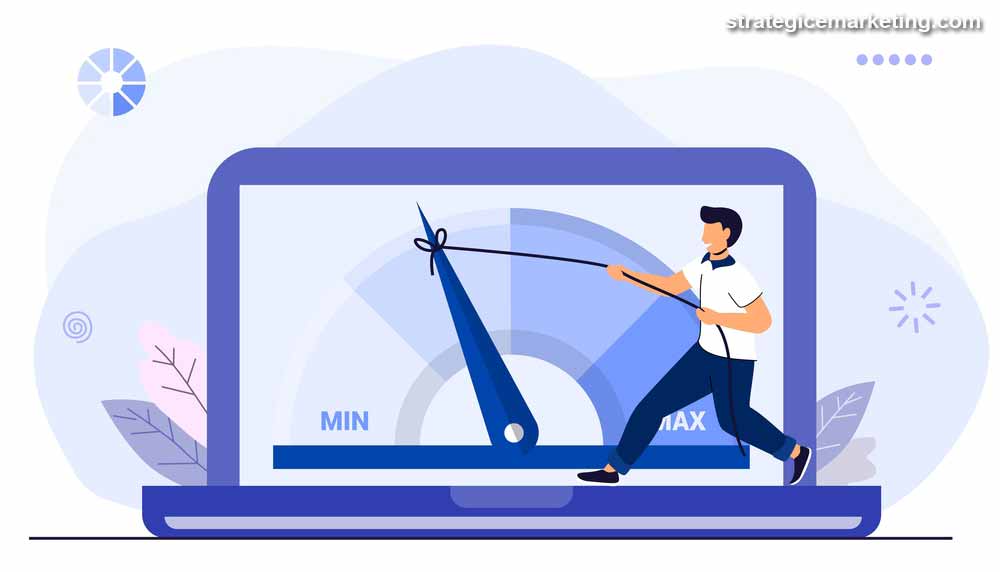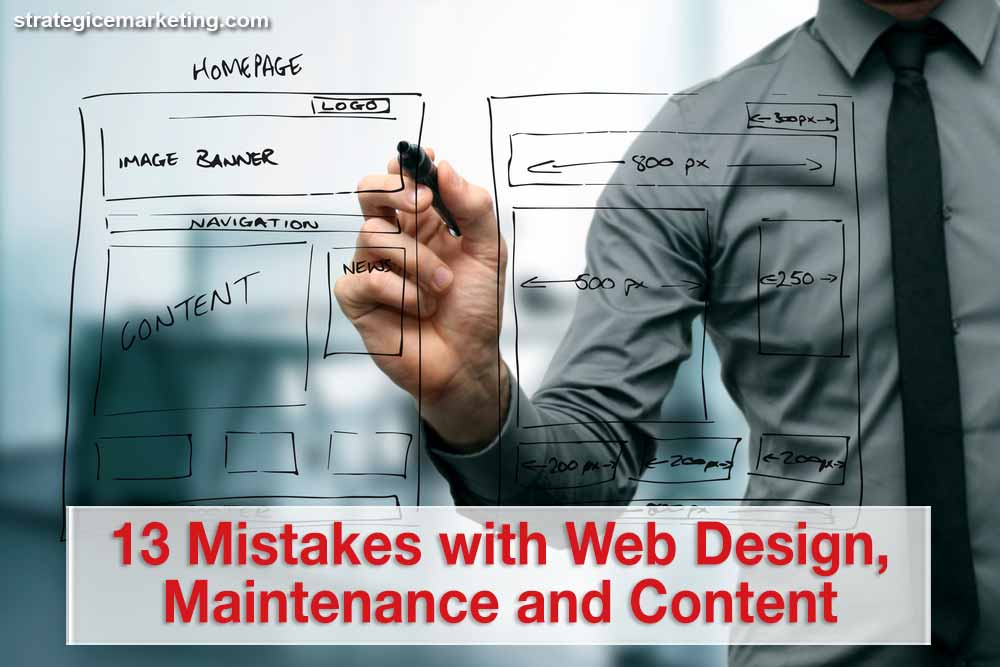Hi, I’m Emanuel Rose from Strategic eMarketing. Thanks for joining me for Manny’s Marketing Minute.
Let’s talk about the 13 biggest mistakes I see in website design, maintenance, and web content. First thing I see a lot is very slow website load times. One of the important factors for Google ranking is a website load time less than one second. There are lots of ways to accomplish it. Make sure your marketing team is getting everything compressed so your site has good content and gets loaded fast. You only have six seconds to get people’s attention.

The second mistake I see a lot is that there’s no lead for the website. I’m sure you have heard of “burying the lead” – that’s when the content at the top of the homepage is bland, boring, not interesting or engaging and it leads to fast bounce.
Third – I still surprisingly see that there’s not an SSL certificate for a website. This is another big Google mark down. Not having an SSL Secure Socket Layer, a relatively new security feature in the last few years, needs to happen on your hosting platform.
The fourth thing is that there’s not any kind of recognition of ADA Compliance. You are probably familiar with the Americans with Disabilities Act and how it applies to digital properties. There are lawsuits being filed every day against different sectors of the economy that have deep pockets because they lack ADA Compliance. It’s a very critical element of the website that needs to be added ASAP.

The fifth mistake I see is that there’s no visitor tracking, either by IP Address or unmasking specific individuals. These technologies are ubiquitous now. For any company that is paying for pay-per-click ads or email marketing, it’s one more layer of establishing who’s coming onto your site – who’s a warm lead. And these unmasking or in data enrichment codes will sweep that information and put it into your CRM. It’s a mistake that I see most people making.
The sixth thing I see is that companies are not reviewing their analytics, seeing how many visitors they are getting, what content is being reviewed, and how long people are staying on the site.
Number seven is they are missing a tracking code, called Hotjar, which is something that tracks how much and which content visitors are engaging with, and how long somebody’s on your site. It tracks what they’re clicking on – where they’re actually putting their mouse on your website. These are critical pieces of information that will help you improve your content delivery on your website.

Number eight is not having social media icons (or all the social media icons) on your website. If you have social media properties and you should, then you need to have them listed on your website somewhere where people can find them easily – it will get you more customers. It’s also about how vendors research you to make sure you’re a good credit risk and how new employees research you to see if they want to work there or not. Social media icons have to be on your website!

Number nine is having a super old website with design standards that are way out of date. If your website is over 10 years old, tomorrow you have to start the project. If it’s over five years old, you need to start the project every three years to refresh, re-skin and update the way that it interacts with the world.
The number 10 mistake is for a site to not be mobile compatible or to load very slowly on mobile – huge mistake. Most searches, I think it’s more than 70% of all searches, start as a mobile search. So you’ve got to load quickly and be mobile compatible.
Number 11 is that pop ups or other forced content are keeping the visitor from getting to the information that they want. Again, you’ve got six seconds or less to capture somebody’s attention and deliver some content that’s valuable so they’ll stick around. Delaying that process is only hurting you.

The 12th mistake that I see a lot is a very weak About Us section. It’s not enough to have a paragraph about the company and when it was founded in About Us, you really should develop who’s on your team. It should be humanized, personalized and made to feel warm. You get the human part of your business and operations in the About Us section. Post images of executives with their puppies or their children, things like that, where they feel like real people. It’s critical.

And the 13th thing that I see as a mistake with websites is only using stock images or images of machinery or images of equipment, but no humans in them. So you’ve got to personalize and humanize your business, your website and your offer,and you do that by showing photos of humans interacting and doing things. They can be iPhone-quality photos. They don’t have to be photoshoot quality, but you need to have people on your website.

